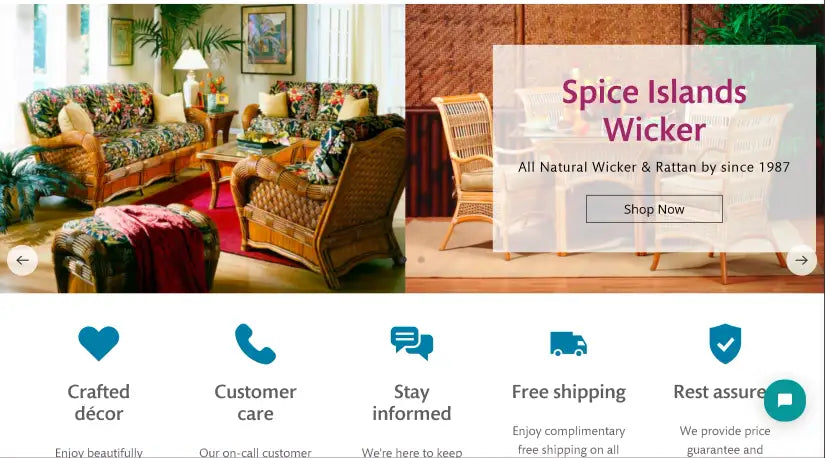Why Rattan End Tables Are the Perfect Addition to Any Home
A rattan end table offers the perfect blend of natural beauty, durability, and versatility that makes it an ideal choice for any interior style. Here's what makes rattan end tables so special:
Key Benefits:
- Lightweight yet sturdy - Easy to move but built to last
- Natural texture - Adds warmth and visual interest to any room
- Versatile styling - Works with bohemian, coastal, modern, and traditional decor
- Sustainable material - Fast-growing renewable resource
- Timeless appeal - Classic design that never goes out of style
Common Uses:
- Next to sofas and armchairs in living rooms
- As nightstands in bedrooms
- In sunrooms and covered patios
- As accent pieces in entryways
Rattan is a tough, adaptable vining plant native to Southeast Asia that belongs to the palm family. Unlike bamboo, rattan has a solid core, making it incredibly strong and flexible for furniture making. The material can grow up to 500 feet long, and artisans heat and bend the poles into graceful shapes that create the distinctive woven patterns we love.
What makes rattan particularly appealing is its natural imperfections - the variations in tone, texture, and grain that give each piece unique character. As one furniture expert notes, "People are attracted to that unique texture, and the sense of warmth and elegance the material conveys."
I'm Nino Russo Alesi, founder of Rattan Imports, where I've spent years helping customers find the perfect rattan end table to create those special moments in their homes. My passion for combining Italian design sensibility with exceptional customer service has helped countless clients find how the right piece can transform their living spaces.
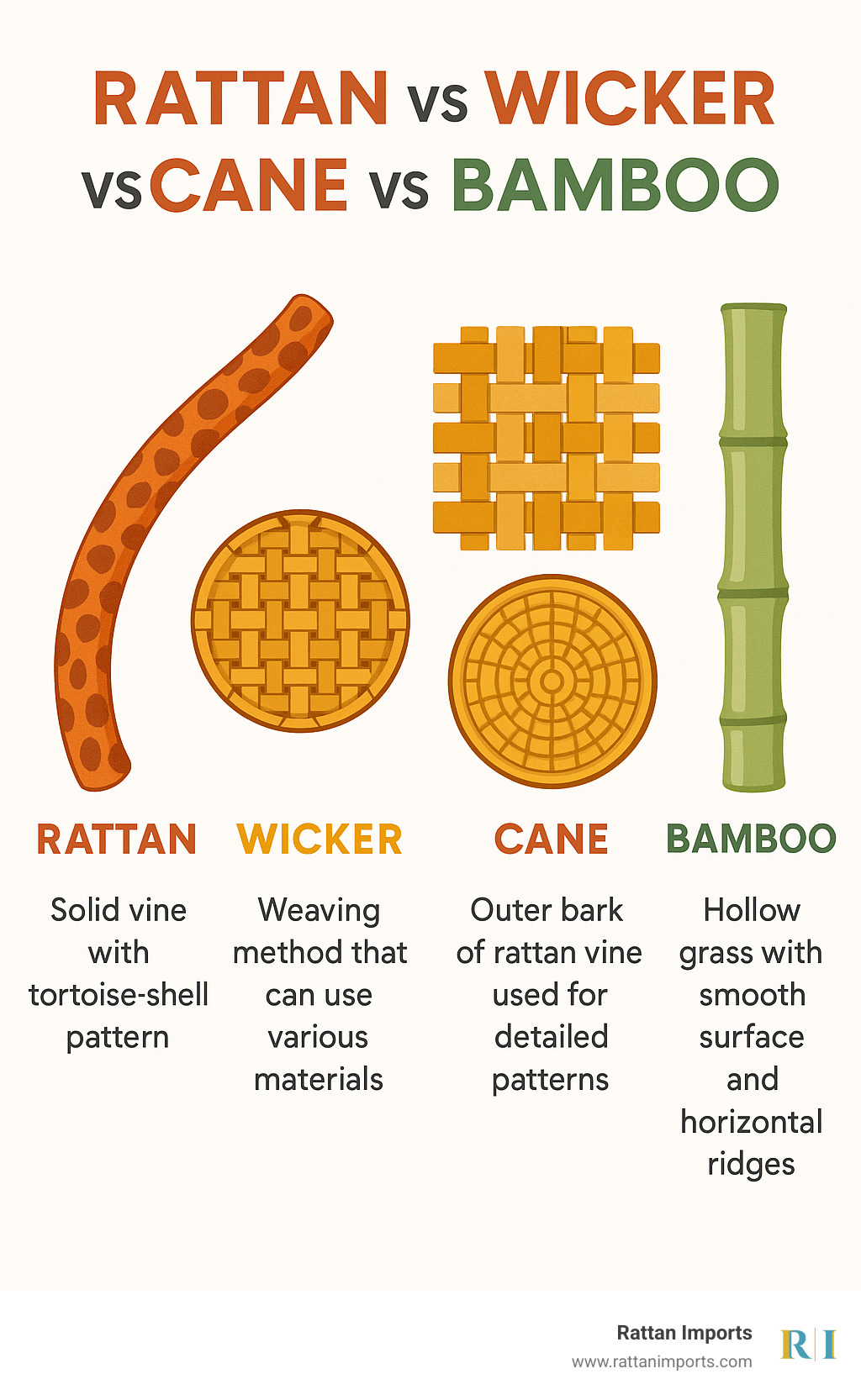
Rattan end table vocabulary:
What Makes Rattan the Perfect Material for an End Table?
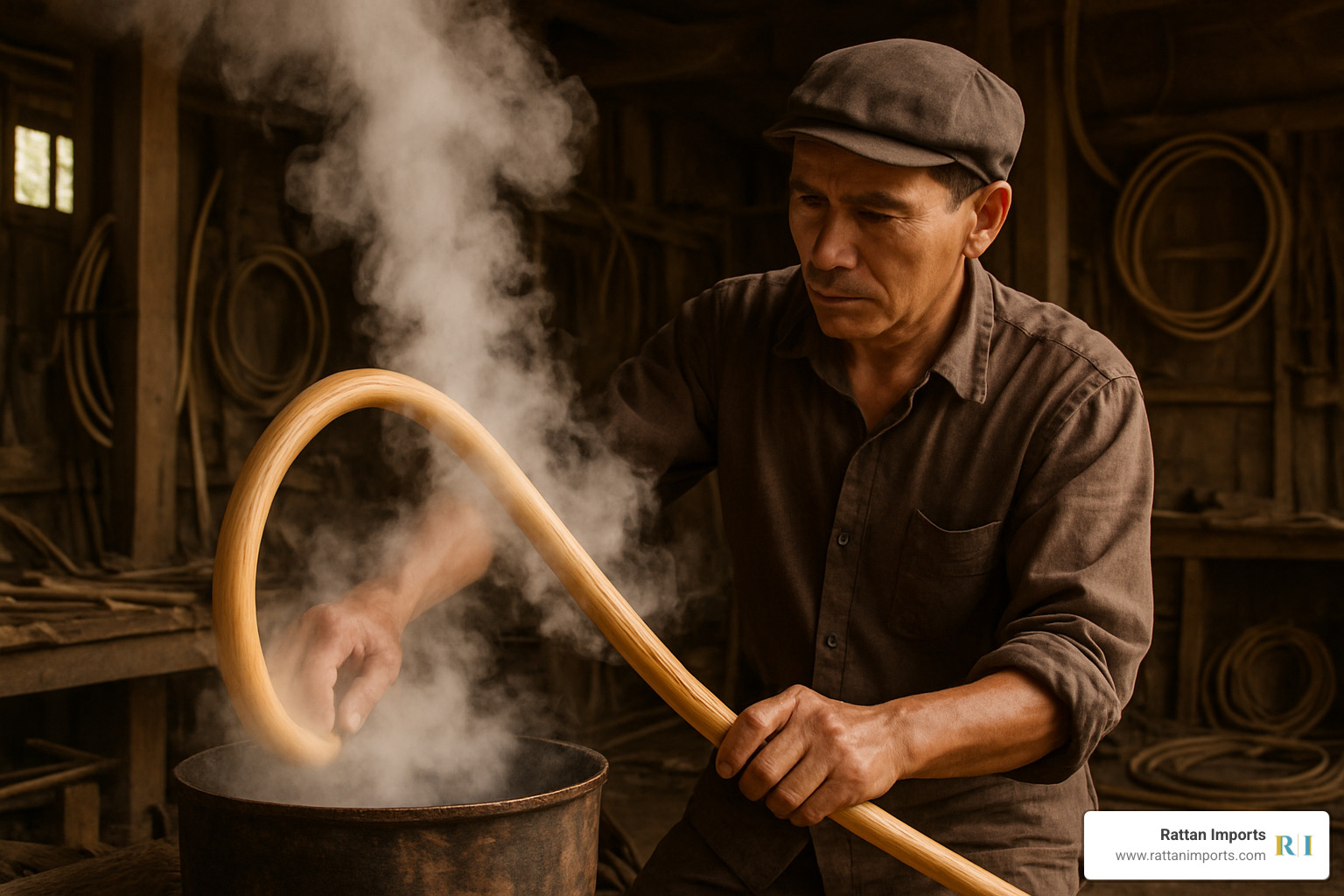
When you touch a well-made rattan end table, you're experiencing the result of nature's perfect engineering. Rattan is a vining palm that grows wild in the tropical forests of Southeast Asia, where it can stretch an incredible 500 feet long and several inches thick. Think of it as nature's own flexible steel cable - strong enough to support weight, yet bendable enough to create beautiful curves.
What makes rattan so special for furniture is its solid core. Unlike bamboo, which is hollow inside, rattan is dense all the way through. This gives your end table incredible strength while keeping it surprisingly lightweight. You can easily move a rattan piece from room to room, but it won't wobble or feel flimsy when you set your coffee mug down.
The magic happens when skilled craftsmen transform raw rattan into furniture. They use steam, heat, and sometimes even fire to make the tough vines flexible enough to bend into graceful shapes. Once the rattan is heated, it becomes like warm taffy - moldable but strong. The craftsman quickly shapes it into curves and angles, then lets it cool and dry in place. The result is furniture that holds its shape for decades.
Most of the rattan used in quality furniture comes from the forests of Southeast Asia, particularly the Philippines. There are over 600 species of rattan, though only about 20% are suitable for furniture making. The best pieces use multiple poles stacked tightly together - six poles is considered the gold standard for premium furniture.
What really excites me about rattan is how it supports both beautiful homes and healthy forests. Rattan is a sustainable resource because it's a fast-growing plant that can be harvested without killing the root system. Unlike cutting down trees, harvesting rattan actually encourages new growth. The economic value of rattan harvesting also supports forest conservation - local communities have a financial incentive to protect the forests where rattan grows rather than clear them for other uses.
Of course, this only works when rattan is sourced responsibly. That's why we work closely with suppliers who follow sustainable practices and support the communities that depend on these forests. The FAO's research on rattan conservation and sustainable development shows how proper management can make rattan a truly renewable resource for generations to come.
When you choose a rattan end table, you're not just getting a beautiful piece of furniture - you're investing in a material that's been perfected by nature and refined by generations of skilled craftspeople.
Our Top Picks for Every Style
Finding the perfect rattan end table is mainly about matching your look and your lifestyle. Below are the styles customers ask for most, with a quick snapshot of why each works so well.
The Classic Rattan Drum Table

A round drum table is an instant statement piece. The woven texture and soft edges fit effortlessly into boho, coastal, or even sleek modern rooms while keeping foot traffic smooth in tight spaces. See more ideas in Rattan Drum Side Tables: Lift Your Space with Style.
The Functional Rattan End Table with Storage
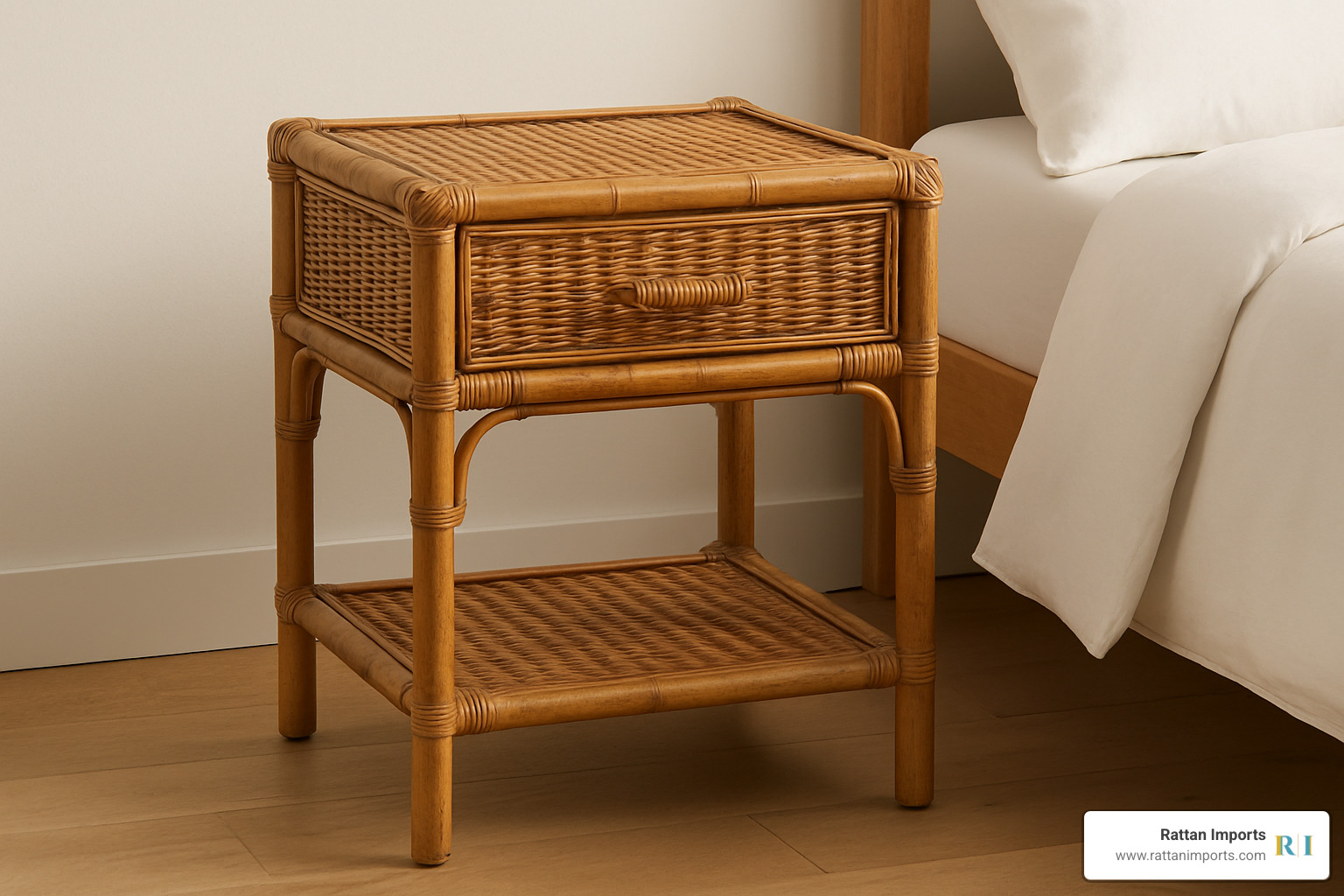
Need a spot to tuck away remotes, chargers, or bedside essentials? Go for a rattan table with drawers or shelves. It keeps clutter out of sight yet close at hand, making it a smart pick for both living rooms and bedrooms. Explore options in Nightstand Nirvana: Best Cane Nightstands (Set of 2).
The Neat Glass-Top Table
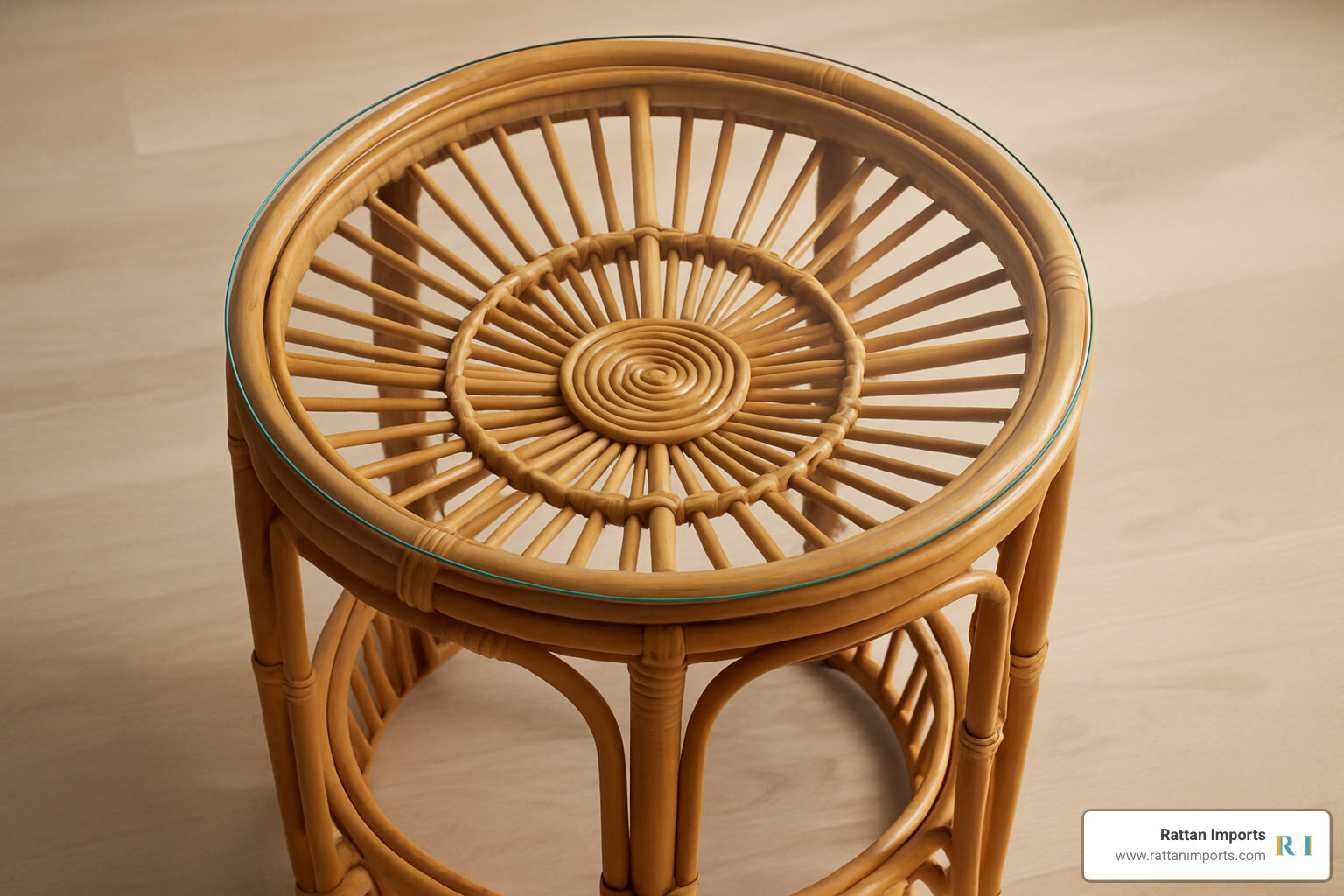
A clear glass surface highlights the intricate weave below while giving you an easy-wipe tabletop—perfect if you love rattan’s texture but need a modern, low-maintenance finish. More inspiration is in Modern Rattan Table and Chairs to Lift Your Home Decor.
The Space-Saving Nesting Set
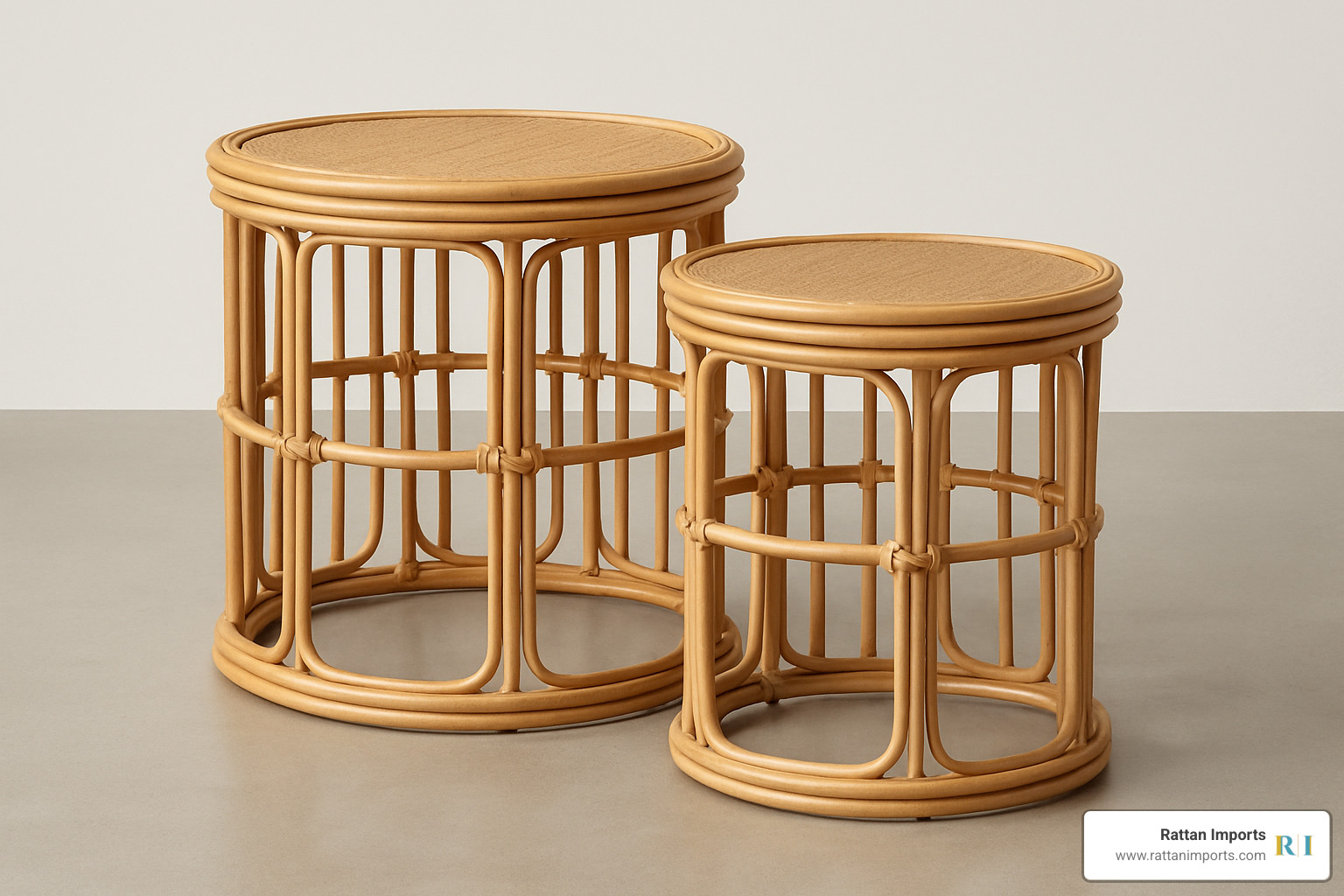
Nesting tables slide together when you need floor space and separate when you’re entertaining—ideal for apartments or multipurpose rooms. Look for sets of two or three so you always have an extra perch for drinks or décor.
How to Choose the Perfect Rattan End Table for Your Space
Finding the Right Size and Shape
Aim for a table height level with—or up to 2 inches below—your sofa arm so drinks and books are easy to reach. Most end tables are 20–25 inches tall, versus 16–18 inches for coffee tables. Round tables improve flow in small rooms, square tables maximize surface in a compact footprint, and rectangular tables suit long seating arrangements.
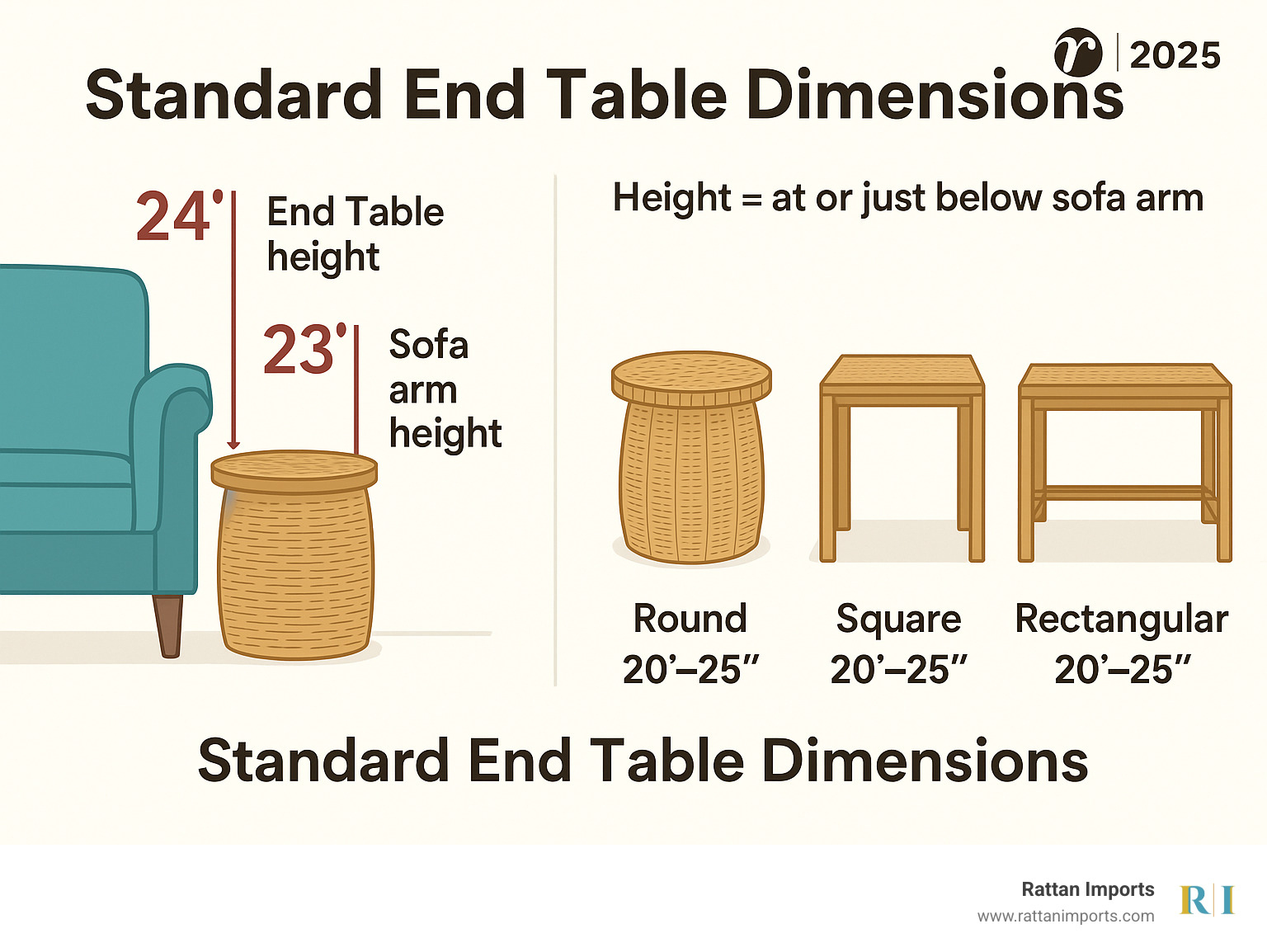
Matching Your Style: Finishes and Weaves
Natural honey tones feel casual and timeless, white paint delivers coastal freshness, and a rich stain lends formality. Tight classic weaves suit traditional rooms, while open patterns or cane accents read more contemporary. See more combinations in Wicker Wonders: End Tables to Complete Your Room.
Functionality First: Storage and Surfaces
Pick features that match your habits. Drawers hide small items, lower shelves keep books handy, and a tempered glass top offers wipe-clean protection. Families may favor rounded edges; entertainers may prefer extra surface space. For functional styling tips, visit Sofa Tables with Wicker Baskets: A Perfect Blend of Style and Function.
Caring for Your Rattan Furniture: Indoors and Out
Indoor Maintenance
- Dust weekly with a soft cloth; use a vacuum brush for crevices.
- For deeper cleaning, wipe with a damp (not wet) cloth and mild soap, then dry immediately.
- Keep humidity moderate and avoid direct heat vents to prevent cracking.
- Blot spills fast, and use coasters—especially on un-topped pieces.
Outdoor Guidelines
Natural rattan is best on covered porches, patios, or sunrooms where rain and intense UV can’t reach it directly. If you need furniture for fully exposed areas, choose synthetic rattan built for all-weather use. Good airflow and occasional wipe-downs help prevent mold; bring pieces inside during severe weather or cover them when not in use.
Frequently Asked Questions about Rattan End Tables
What’s the difference between rattan, wicker, and cane?
- Rattan: the sturdy vine used to build the frame.
- Wicker: the weaving technique—can be done with rattan or other materials.
- Cane: the thin outer bark of rattan, used for fine caned patterns.
Is rattan furniture durable?
Yes. The vine’s solid core makes it surprisingly strong and long-lasting. Quality pieces with tight weaving and good joinery can serve 20 years or more with regular indoor care.
Is rattan sustainable?
Rattan matures in about 5–7 years (far faster than hardwoods) and is harvested by hand, supporting Southeast Asian forest communities and encouraging conservation when sourced responsibly.
Conclusion
A well-chosen rattan end table brings natural warmth, versatility, and decades of durability to any room. Whether you prefer a classic drum, a storage-savvy nightstand, a modern glass-top, or a space-saving nesting set, Rattan Imports has a handcrafted option ready to ship free across the U.S. mainland. Browse the full collection and find how one small table can make your entire space feel more inviting.

